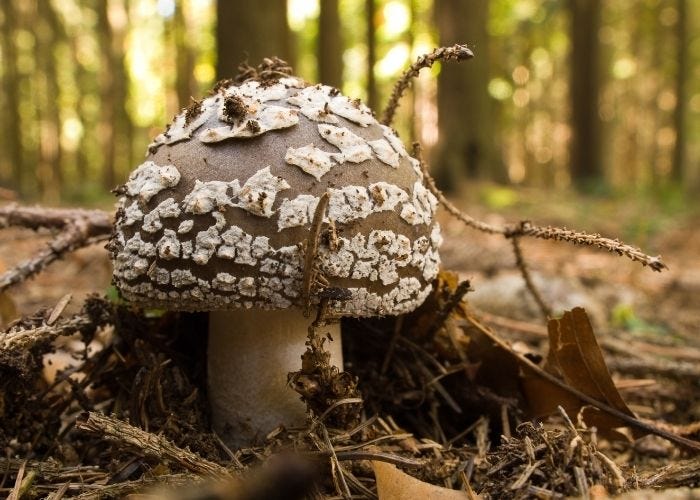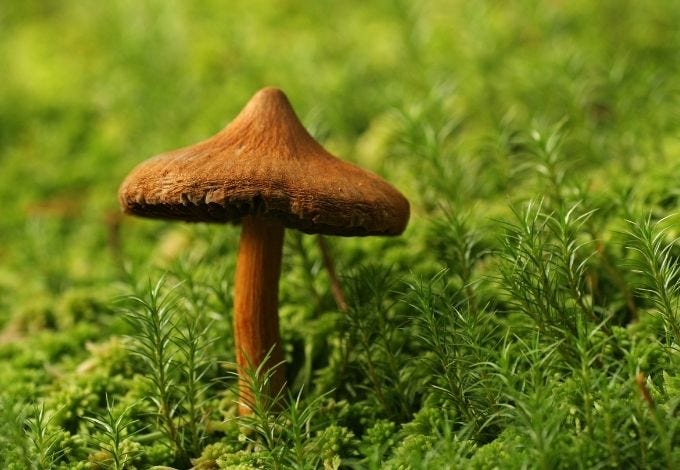13 deadliest mushrooms in the world (don’t munch on these)
It might surprise you that just a small number of mushrooms are really deadly. This list actually has most of them. How many of them do you know?
13. Livid pinkgill (Entoloma sinuatum)

Livid pinkgill is very similar to St. George’s mushrooms, which are quite popular in Europe. The poisoning causes severe gastrointestinal problems and can result in death. Luckily they are quite scarce, and only a few unlucky people poison themselves with them.
12. Ivory funnel (Clitocybe dealbata) and fool’s funnel (Clitocybe rivulosa)

These meadow and lawn mushrooms are common in both North America and Europe. Their poison muscarine attacks the central nervous system. Inexperienced foragers might mistake them for a scotch bonnet or other tiny edible lawn mushrooms. If you forage those, make sure to confirm the identity of each mushroom you pick.
11. Common roll-rim (Paxillus involutus)

This fungus is common in North America and Europe. It doesn’t poison you right away, and it was long considered edible. In fact, it still is consumed in some parts of the world, for example. In Russia and Ukraine, foragers often compare its taste to pork.
The toxin accumulates in the human body. Once you eat a certain amount of roll rims during your lifetime, it causes a strong allergic reaction with symptoms similar to leukemia. Not worth the pork flavor, I would say.
10. False morels (Gyromitra species)

False morel is the only mushroom on this list that can poison you without you consuming it. Its poison gyromitrin can spread through the air and cause nausea, vomiting, and dizziness to people in the same room with false morels.
Surprisingly, this is another poisonous mushroom that some people eat. They believe that gyromitrin disappears during cooking — but research shows otherwise.
9. Poison fire coral (Podostroma cornu-damae)

This evil fungus doesn’t make a higher position on this list because it is rare, native to just several regions of Asia and Australia, and doesn’t look like any edible mushroom species. It causes severe poisoning, which results in the failure of several organs and often even death.
Some websites claim that the mushroom can be poisonous just to the touch. However, there is no proof of this; it is a made-up rumor.
8. The dapperlings

The dapperlings are the first mushrooms on this list that contain the vicious toxin amanitin. Its first symptoms appear with a delay, then go away, so the victim might think they got better — but that’s just the toxin being really mean. In the meantime, it destroys the liver, which will result in death.
7. Funeral bell (Galerina marginata)

Funeral bell kills its victims with amanitin too. As the name suggests, this tiny mushroom doesn’t mess around: just 12 funeral bells can kill an adult human.
Gourmet mushroom foragers can mistake funeral bells for various small brown edibles like heated woodtufts or velvet shanks. Magic mushroom hunters can mistake the funeral bell for some psilocybe mushroom species. If they do, they are up for a different trip than they intended. If they are lucky, it is just a trip to the hospital.
6. Removed
It has been pointed out to me that that with the mushroom number 6, the panther cap, poisoning is rarely if ever fatal. It’s supposed deadliness is a result of oral tradition and it doesn’t really deserve its place on this list.

This look-alike of the popular blusher mushroom grows in Europe and Asia. Its poison is muscarine.
The first symptoms of the poisoning resemble drunkenness. They include vomiting, headache, dilated pupils, and strong heartbeats. The victim hallucinates and switches between euphoria and fatigue.
5. Deadly fibercap (Inocybe erubescens)

All fibercaps are poisonous, and this one is their king. A single mushroom has enough of it to kill an adult human. Luckily, it is easy to recognize with its fibrical cap and flesh slowly turning red when bruised.
4. Little white (Trogia venetata)

This innocent-looking little white mushroom is blamed for a series of sudden deaths in Asia in the 1980s. It took scientists 30 years to explain the “ Yunnan sudden death syndrome.” Over 400 people died during the period.
3. Destroying angels (Amanita virosa, Amanita verna, Amanita ocreata, Amanita magnivelaris)

Destroying angels are very similar to young edible champignons. The only prominent difference between the species is the destroying angel’s “chalice of death.” However, that chalice could be hidden in the ground and break off as you pick the mushroom. Just one of these pure-white toadstools is enough to kill a forager who overestimated their knowledge.
2. Deadly webcap (Cortinarius rubellus) & fool’s webcap (Cortinarius orellanus)

These deadly webcaps are the most insidious mushrooms of all. The symptoms of their poisoning will appear anytime between 3 days and 3 weeks after consumption. By then, it is often too late to save the victim. Of course, with such delay, mushroom poisoning is often not suspected of being the cause of the resulting health problems. Even the deaths caused by these webcaps were long attributed to other causes. The deadly webcap was actually considered edible until the 1950s.
1.Death cap (Amanita phalloides)

The death cap is the deadliest mushroom in the world. It is responsible for the most mushroom-related deaths not just in the US and Europe but also worldwide. A single mushroom has enough amanitin to kill an adult human.
How does a death cap kill you?
The most prominent toxin of the death cap, amanitin, attacks the liver and kidneys. First, it will cause heavy dehydration and demineralization. If you survive that, the poisoning will usually result in liver and kidney failure.
The probability of death is about 60%, but only 13% with proper medical help. Survivors often need a liver and kidney transplant, though.
Do you agree with the order? Did I forget about a deadly mushroom? Let me know in the comments!
Originally published at my now closed blog.
Photos either by author or obtained via Canva Pro or Creative Commons license as attributed in the text.